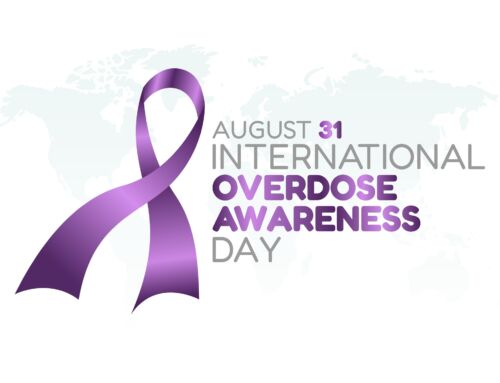Childhood trauma encompasses distressing experiences during formative years, such as physical or sexual abuse, neglect, or exposure to household dysfunction. These adverse childhood experiences (ACEs) can profoundly influence an individual’s mental health and behavioral patterns into adulthood. A significant and concerning outcome of such trauma is the heightened risk of developing substance use disorders. Understanding the intricate relationship between childhood trauma and addiction is crucial for effective prevention and treatment strategies.
Defining Childhood Trauma and Its Prevalence
Childhood trauma refers to events that threaten a child’s sense of safety and well-being. Common examples include physical abuse, sexual abuse, emotional maltreatment, neglect, and witnessing domestic violence. The Substance Abuse and Mental Health Services Administration (SAMHSA) defines individual trauma as resulting from events or circumstances experienced as physically or emotionally harmful, with lasting adverse effects on functioning and well-being.
The prevalence of ACEs is alarmingly high. Studies indicate that a significant portion of the population has encountered at least one adverse experience during childhood, with many experiencing multiple forms. These experiences can lead to toxic stress, which disrupts healthy brain development and increases vulnerability to various health issues.
The Link Between Childhood Trauma and Substance Abuse
The correlation between childhood trauma and substance misuse is well-documented. Individuals who have experienced traumatic events during childhood are at a substantially higher risk of developing substance use disorders in later life. This relationship can be attributed to several factors:
- Self-Medication Hypothesis: Many individuals turn to substances as a means to alleviate or numb the distressing emotions and memories associated with their traumatic experiences. This coping mechanism, while providing temporary relief, often leads to dependency and addiction.
- Altered Brain Development: Exposure to trauma, especially during critical developmental periods, can adversely affect brain regions responsible for stress responses, impulse control, and emotional regulation. These neurological changes can increase susceptibility to addictive behaviors.
- Co-Occurring Mental Disorders: Childhood trauma is a significant risk factor for various mental health conditions, including post-traumatic stress disorder (PTSD), depression, and anxiety. The presence of these disorders can further elevate the likelihood of substance misuse as individuals seek relief from their symptoms.
Adverse Childhood Experiences (ACEs) and Their Long-Term Impact
The concept of ACEs encompasses various forms of childhood adversity, including abuse, neglect, and household dysfunction. Research indicates a dose-response relationship between the number of ACEs and the risk of negative health outcomes. Individuals with four or more ACEs are particularly susceptible to developing substance abuse, mental health issues, and chronic diseases.
The cumulative effect of multiple ACEs can lead to toxic stress, which disrupts the body’s stress response systems and contributes to the development of maladaptive coping mechanisms, such as substance misuse.

Recognizing the Signs of Trauma-Related Addiction
Identifying when someone’s substance use is tied to a history of childhood trauma is crucial for delivering the right kind of treatment. Many individuals who have experienced trauma, especially in early life, may not immediately connect their addiction to those past experiences. As a result, signs of trauma-related addiction can be easily overlooked—by clinicians, loved ones, and the individuals themselves.
Here are some key indicators that a person’s substance misuse may be rooted in unresolved trauma:
Escalation of Substance Use Following Traumatic Events
A noticeable increase in drug use or alcohol consumption after a traumatic experience—such as the loss of a loved one, a violent incident, or resurfacing memories of childhood abuse—can suggest that the individual is using substances to dull emotional pain. This pattern is common among people with PTSD symptoms or a history of childhood adversity, particularly if they have never received mental health support for those events. The substance use may begin as a seemingly manageable coping strategy but can quickly spiral into a substance use disorder.
Use of Substances to Cope with Trauma Triggers
People with a history of trauma often encounter “triggers”—sights, sounds, smells, or even emotional states that remind them of their traumatic experiences. In an effort to avoid or escape the distress these triggers cause, they may turn to substance use. This form of self-medication is a red flag that the person is attempting to manage emotional responses outside of a therapeutic setting. Over time, this reliance on substances reinforces the vicious cycle of trauma and addiction, making it harder to break free without professional help.
Patterns of Avoidance and Numbing
Substances can offer a temporary escape from painful memories or the emotional fallout of trauma. Many individuals with trauma exposure report feeling detached, “shut down,” or emotionally numb—a protective mechanism the brain develops in response to overwhelming stress. Unfortunately, this emotional suppression often becomes intertwined with substance use. Individuals may drink or use drugs to avoid confronting difficult emotions, interpersonal conflict, or internalized shame stemming from childhood sexual abuse, physical abuse, or emotional abuse. In some cases, these patterns may mask mental disorders such as depression or anxiety that co-occur with trauma.
Co-Occurring Behavioral Health Issues
When trauma-related addiction is present, it often coexists with other mental health conditions. A person may exhibit signs of post-traumatic stress disorder, including hypervigilance, nightmares, irritability, or social withdrawal. Others may show symptoms of anxiety, mood swings, or dissociation. These mental disorders can both mask and amplify substance addiction, making it important to assess for trauma in all addiction-related treatment settings.
History of Childhood Adversity
A deeper look at an individual’s background often reveals critical risk factors, such as childhood traumatic experiences, parental mental illness, household dysfunction, or community violence. When individuals have experienced multiple forms of adverse childhood experiences, especially four or more ACEs, they are significantly more likely to struggle with nicotine dependence, personal alcohol abuse, or drug dependency later in life. Recognizing this history is essential in tailoring a trauma-informed approach to care.
The Importance of Trauma-Informed Care in Addiction Treatment
Addressing the underlying trauma is vital for effective addiction treatment. Trauma-informed care (TIC) is an approach that recognizes the pervasive impact of trauma and integrates this understanding into all aspects of treatment. Key principles of TIC include:
- Safety: Ensuring physical and emotional safety for clients.
- Trustworthiness and Transparency: Building trust through clear communication and consistent practices.
- Peer Support: Incorporating support from individuals with lived experiences of trauma.
- Collaboration and Mutuality: Emphasizing partnership between clients and providers.
- Empowerment, Voice, and Choice: Prioritizing client empowerment and decision-making in their treatment.
- Cultural, Historical, and Gender Issues: Being sensitive to cultural, historical, and gender-related factors.
Implementing TIC can enhance engagement, reduce dropout rates, and improve outcomes in addiction treatment.

Effective Treatment Modalities for Trauma-Related Addiction
Healing from both childhood trauma and substance addiction requires a nuanced and comprehensive treatment approach. Many individuals with trauma histories also struggle with co-occurring mental disorders, such as depression, anxiety, or post-traumatic stress disorder (PTSD). As a result, therapeutic interventions must target both the underlying trauma and the patterns of substance use that have developed as a response.
Here are several research-backed treatment modalities that have proven effective in treating trauma-related addiction:
Eye Movement Desensitization and Reprocessing (EMDR)
EMDR is a specialized psychotherapy technique designed to help individuals process and reframe traumatic memories. Unlike traditional talk therapy, EMDR uses bilateral stimulation—often through guided eye movements—to help clients desensitize painful memories and reduce the emotional charge associated with them. For individuals with a history of childhood abuse, sexual abuse, or other traumatic events, EMDR can dramatically reduce PTSD symptoms and improve emotional regulation without requiring prolonged verbal recounting of their trauma.
Cognitive Behavioral Therapy (CBT)
CBT is a widely used approach in both mental health and addiction treatment. It helps individuals recognize and change unhelpful thought patterns and behaviors that contribute to their distress. For those dealing with childhood trauma and addiction, CBT is particularly effective at addressing the negative core beliefs—such as shame, guilt, or worthlessness—that often stem from adverse childhood experiences. It also helps people build healthier coping mechanisms for managing cravings, stress, and emotional triggers.
Dialectical Behavior Therapy (DBT)
DBT is an evidence-based approach originally developed for people with intense emotional responses and difficulties in interpersonal relationships. It combines elements of CBT with mindfulness, distress tolerance, and emotional regulation skills. DBT is especially helpful for individuals who have experienced emotional abuse, physical abuse, or neglect, and who may have developed impulsive behaviors or self-harming tendencies, including substance misuse. Its structured, skills-based format can reduce the emotional overwhelm that often drives drug or alcohol use.
Trauma-Focused Cognitive Behavioral Therapy (TF-CBT)
For those with a history of childhood traumatic experiences, including childhood sexual abuse or community violence, TF-CBT provides a developmentally sensitive framework that addresses both trauma and substance use. This modality is structured to gradually expose clients to traumatic memories in a safe way, while building resilience and reinforcing protective factors such as emotional regulation, family support, and communication skills.
These modalities aim to help individuals process trauma exposure, reduce the impact of toxic stress, and develop healthy coping strategies. By addressing both the root causes and the behavioral consequences of trauma, clients are better able to build a foundation for long-term recovery and wellness.
Preventative Measures and Early Intervention
Screening for ACEs: Incorporating routine screening in pediatric and primary care settings to identify at-risk individuals based on their exposure to childhood adversity. Early detection can allow for timely support and the introduction of protective factors to counterbalance risk.
Early Mental Health Intervention
Providing accessible and non-stigmatizing mental health services for children and adolescents who have experienced trauma. This includes support for those affected by childhood sexual abuse, emotional abuse, physical abuse, and community violence.
Family-Based Approaches
Strengthening family relationships through counseling, parent education, and interventions that promote safe and stable home environments. Addressing household dysfunction, parental mental illness, and personal alcohol abuse within the family system can significantly reduce long-term harm.
Support in Educational Settings
Schools play a crucial role in identifying students experiencing early life stress or school violence. Trauma-informed educators can help mitigate the effects of childhood trauma by fostering emotional safety and resilience in students.
Understanding the Vicious Cycle of Trauma and Addiction
Trauma and addiction are often locked in a vicious cycle. Individuals who have experienced trauma may turn to substances to cope, only to find that their substance addiction deepens their emotional pain, creates new traumas, or worsens existing mental disorders. Without appropriate intervention, this loop can continue indefinitely, eroding health, relationships, and self-worth.
This is especially true in cases where trauma was never processed or acknowledged—when someone grows up believing that their pain is something to hide or that they’re to blame for what happened to them. This belief often fuels negative self-image, shame, and secrecy, which are all barriers to recovery.
How Greenbranch Recovery Approaches Trauma and Addiction
At Greenbranch Recovery, we believe healing from childhood trauma and addiction requires an integrated approach. Our programs are designed to address both the emotional wounds of traumatic experiences and the patterns of substance use that often emerge in response.
We offer:
- Trauma-informed care that creates a safe, validating environment for healing
- Therapies that address PTSD symptoms, anxiety, depression, and addiction
- Concurrent treatment of mental health and substance use disorders
- A compassionate, clinically trained staff that understands the complex ways trauma affects individuals
- A full continuum of care, including outpatient, intensive outpatient, and aftercare programs
Whether someone has experienced child abuse, childhood traumatic experiences, or other adverse experiences, we provide the space, tools, and support needed to break free from the cycle.
Hope, Healing, and Long-Term Recovery
Recovery from the long-term effects of childhood trauma is possible. With the right support and treatment, individuals can learn to understand their past, manage their emotional responses, and build a healthier future free from substance misuse.
By addressing trauma through trauma-informed addiction treatment, we can shift the focus from asking “What’s wrong with you?” to “What happened to you?” This compassionate lens empowers clients to reclaim their stories and build lives rooted in self-understanding, resilience, and purpose.
Get Help Today at Greenbranch Recovery
If you or someone you love is struggling with substance addiction related to experienced childhood trauma, you’re not alone—and you don’t have to navigate it without support. Greenbranch Recovery in Egg Harbor Township offers compassionate, professional care for those impacted by childhood adversity and addiction.
We serve individuals throughout Atlantic County, Cape May County, and surrounding communities with expert care rooted in evidence-based practices. Reach out online or call us today at (609) 622-5101 to learn more about our programs, verify insurance, and take the first step toward healing.




